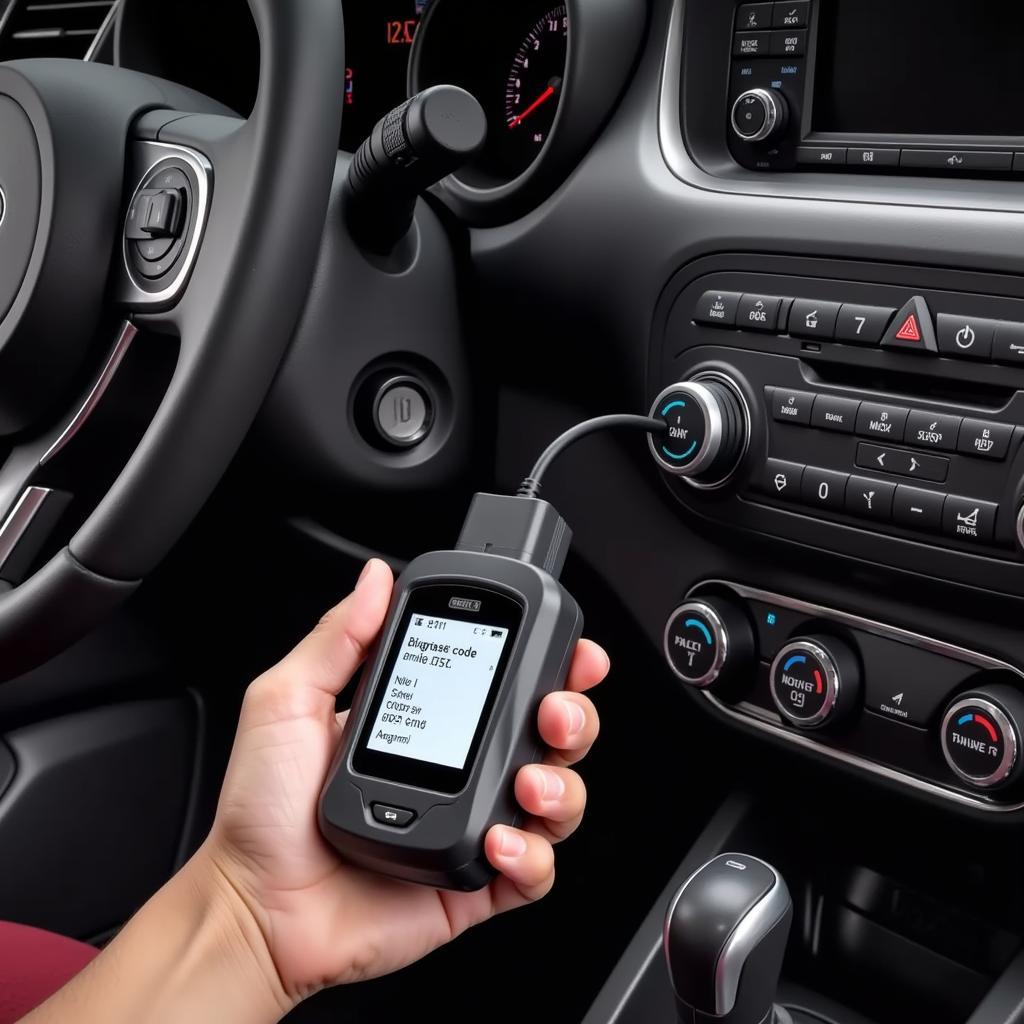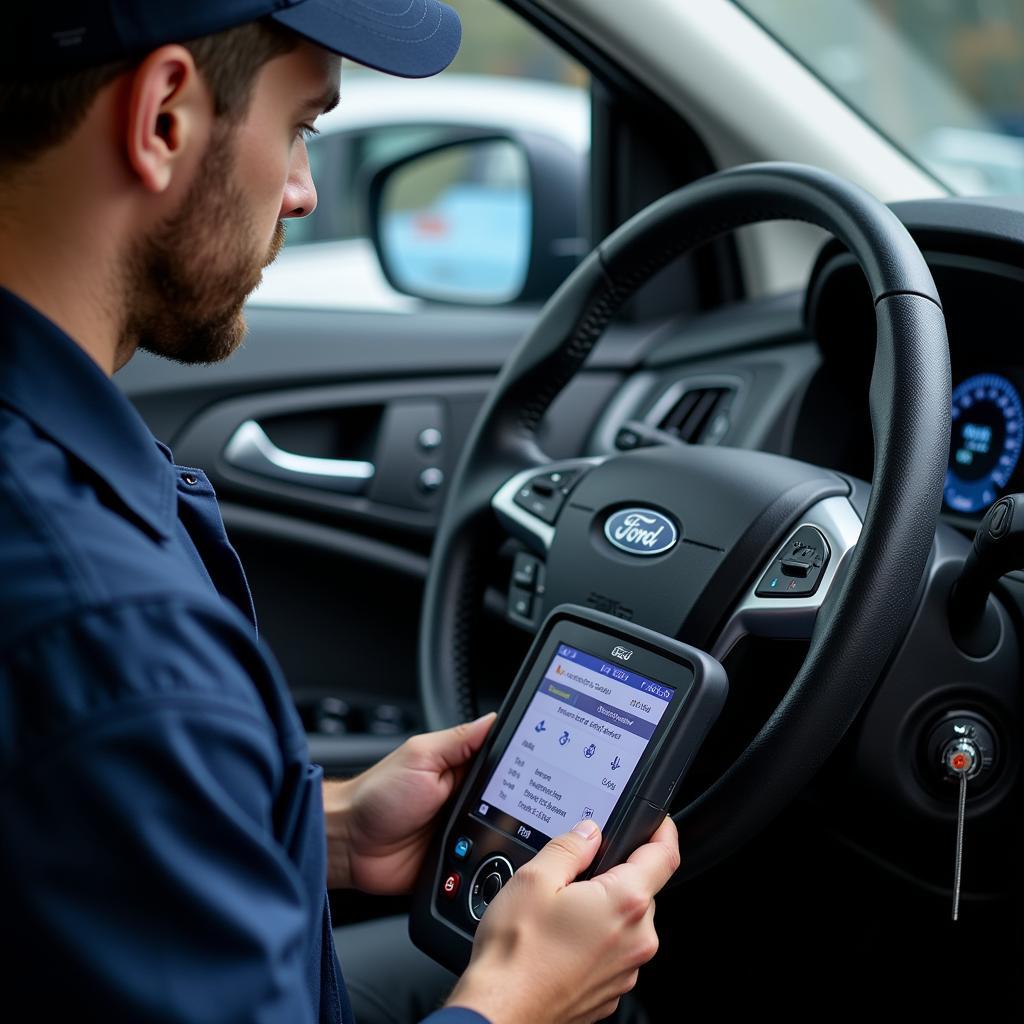Have you ever been driving down the road when the dreaded “Check Engine” light pops up on your dashboard? It can be a nerve-wracking experience, especially if you don’t know what’s wrong. Many people think they need to rush to a mechanic, but in some cases, you might be able to diagnose the problem yourself. Let’s explore what it means when your Check Engine light comes on and see if there are any ways to troubleshoot it without using a scan tool.
Understanding the Check Engine Light
The Check Engine light is a warning signal indicating that your car’s onboard computer system, called the Engine Control Unit (ECU), has detected a problem. This could be anything from a minor issue, like a loose gas cap, to a more serious problem, like a faulty sensor or a problem with the catalytic converter.
Why It Matters
It’s crucial to take action when your Check Engine light illuminates. Ignoring it could lead to further damage to your car, which can be costly to repair.
Why You Might Not Need a Scan Tool Immediately
Not all “Check Engine” light scenarios require an immediate trip to the mechanic. Here are a few common scenarios where you might be able to investigate the issue yourself:
Scenario 1: The Gas Cap
This is a common and easily fixable problem. You can usually resolve it simply by tightening the gas cap.
Scenario 2: The “Check Engine” Light Goes Off
Sometimes, the light might flicker on briefly and then turn off. This often happens when there’s a temporary malfunction in the system, such as a loose connection or a brief interruption in the electrical system. You can keep an eye on the light; if it stays off, you might not have a serious issue.
Scenario 3: Simple Checks You Can Do at Home
Even without a scan tool, you can perform a few basic checks at home to see if you can identify the problem. Here are a few things you can do:
- Check the gas cap: As mentioned above, a loose gas cap can trigger the “Check Engine” light. Tighten it and see if the light turns off.
- Inspect the air filter: A dirty air filter can affect engine performance and trigger the “Check Engine” light. If your air filter is dirty, replace it with a new one.
- Examine the engine for any visible problems: Look for any loose wires, hoses, or other components that might be damaged.
What to Do When the Light Stays On
If the “Check Engine” light remains illuminated after trying the above steps, it’s best to consult with a mechanic or use a scan tool to diagnose the problem. A scan tool can read the codes stored in your car’s ECU, providing insights into what’s causing the issue.
When Do You Need a Scan Tool?
While you can address some Check Engine light issues without a scan tool, a scan tool is indispensable for diagnosing complex engine problems. A scan tool is a diagnostic device that plugs into your car’s OBD-II port (On-Board Diagnostics, commonly found under the driver’s side dashboard) and communicates with the ECU.
It reads diagnostic trouble codes (DTCs) stored in the ECU’s memory. These codes offer valuable information about the problem and often point to the specific sensor, system, or component causing the malfunction.
obd2-scanner-plugged-into-port|OBD2 Scanner Plugged into Port|A closeup image of an OBD2 scan tool plugged into the OBD-II port of a car. The scanner is a small, handheld device with a screen and buttons. The OBD-II port is a standard connector located under the driver’s side dashboard of most modern vehicles. The image should emphasize the connection between the scanner and the vehicle and the clear readability of the screen’s information.
How to Use a Scan Tool
A scan tool makes troubleshooting engine problems much more straightforward. However, using one effectively requires some technical knowledge. If you’re not comfortable with the process, it’s best to seek professional help.
You can explore a range of scan tools on DiagXCar.com, including powerful tools like the Dealer Scanner for European Cars. These scanners offer comprehensive diagnostic capabilities and can be used by home mechanics and professionals alike.
Finding the Right Scan Tool
There are many different types of scan tools available, so finding the right one can feel overwhelming. Consider these key factors when selecting a scan tool:
- Compatibility with your vehicle: Make sure the tool is compatible with your car’s make, model, and year.
- Features: Choose a scan tool with the features you need, such as code reading, live data viewing, and reset capabilities.
- Ease of use: Look for a scan tool that’s easy to understand and use, even if you’re not a mechanic.
Common Questions About Check Engine Lights
Here are some frequently asked questions about Check Engine lights:
Q: Can I drive with the Check Engine light on?
It’s generally not recommended to drive with the Check Engine light on, but some problems might not be serious enough to cause immediate damage. It’s best to address the issue as soon as possible.
Q: Can I reset the Check Engine light without fixing the problem?
You can reset the light by using a scan tool, but this only erases the code. The underlying issue will still be present and could lead to further problems if it’s not addressed.
Q: Why did my Check Engine light come on after a tune-up?
There are several reasons why the Check Engine light might come on after a tune-up. For example, there could be a problem with the sensors that were replaced or adjusted during the tune-up. It’s best to take your car back to the mechanic to diagnose the problem.
Additional Information
To learn more about using scan tools, check out our articles on:
Next Steps
If your Check Engine light is on, and you need a scan tool for diagnosis, please don’t hesitate to contact us at Whatsapp: +84767531508. Our experienced mechanics are available 24/7 to help you with your vehicle diagnostic needs!
variety-of-scan-tools|Variety of Scan Tools|An image showcasing a diverse range of OBD2 scan tools. This could include handheld models, wireless Bluetooth tools, and more advanced professional-grade scanners. The image should highlight the different sizes, features, and functionalities of various scan tools available in the market.


